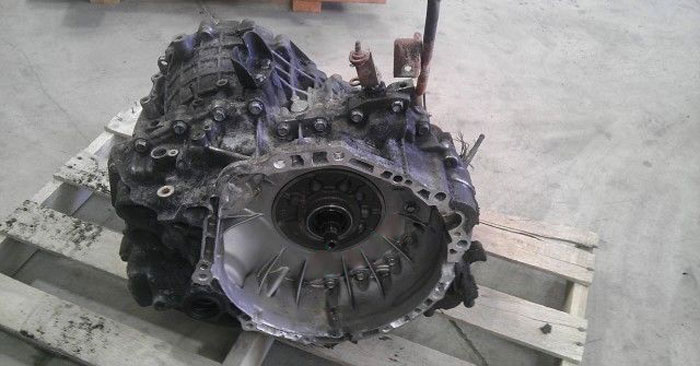There are many important things to consider when servicing the transmission fluid on your vehicle. Proper transmission maintenance is critical for keeping your vehicle in good shape for many years. There are two basic methods for changing the fluid, and the best one depends on why your fluid is being serviced.
If you are performing routine service, a simple drain and refill procedure should be fine. For this, you will only need the appropriate fluid, along with a filter and transmission pan gasket on some models. The drain plug should be removed, allowing the fluid to drain, and then be replaced. Measure the amount of fluid that drained out, to help give you an idea about how much to refill with. After this, the transmission pan bolts should be removed, so that the pan can be taken down.
The transmission, as well as the inside of the pan, can be inspected to check for damage or any metal debris which could indicate any problems. Make sure to check the fluid itself for debris, as well. If everything looks good, then the filter pan gasket can be replaced, followed by re-attaching the pan and bolts. Make sure the bolts are tightened to the correct torque spec. To finish, you simply need to refill the fluid with roughly the amount that drained, check the level and adjust accordingly. About 50% of the vehicle’s total fluid capacity will be replaced with the drain and refill method. For general servicing, this method works great. If you want to change all of the fluid, it may take several drain and refill procedures.
If you are replacing your transmission fluid due to a transmission failure, or you suspect that metal or debris has contaminated the system, then a transmission flush is necessary. This method may also be necessary if you are replacing other damaged components, such as the torque converter, transmission cooler, or cooler lines. Some manufacturers advise against a transmission flush for some of their vehicles, such as Honda. They recommend several consecutive drain and refill procedures, instead. A transmission flush will result in about 90% or more of the fluid being replaced. This will help ensure that any debris will be removed from the system.
If the system is especially contaminated, it may take more than one procedure to completely flush the system. A transmission flushing machine is required, and more clean up will be necessary after the procedure is over. Using a transmission flush solvent can help ensure that all of the debris and dirt is removed from the system. After flushing, the rest of the procedure should be performed as above. You should refill the fluid with a quart less than the factory total, and then adjust accordingly.
Both of these methods will keep your transmission clean and running well. Just make sure you know what will suit your vehicle best, and have the appropriate materials on hand.

